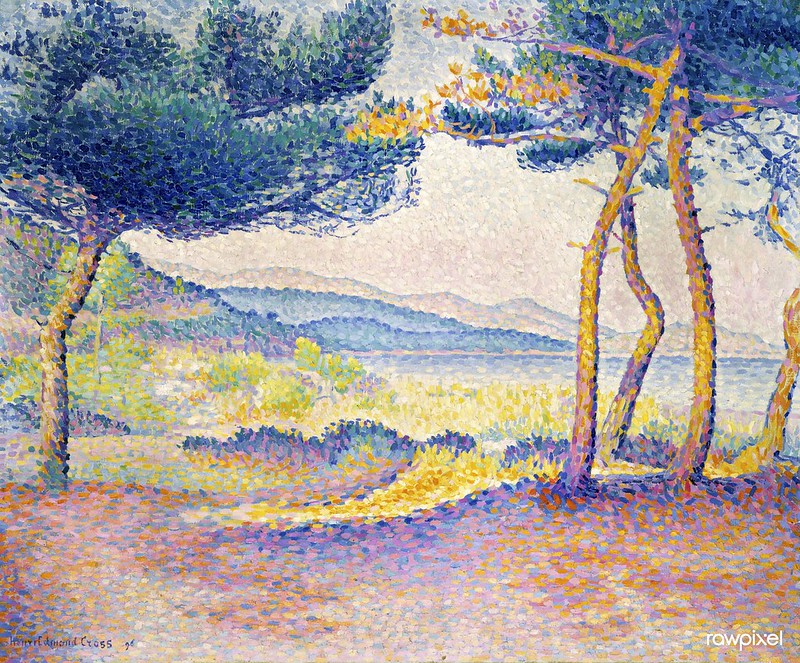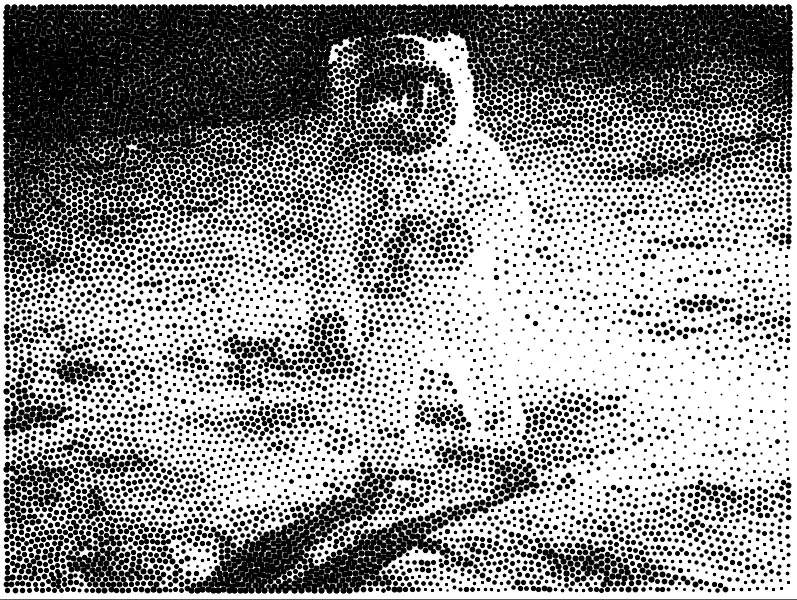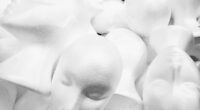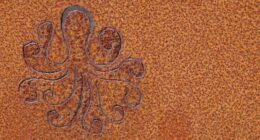Pointillism was developed by Georges Seurat in the late 19th century with the aim of creating a more scientific approach to art. By laying small dots of pure color next to each other, he believed that they would mix optically in the viewer’s eye, creating a greater range of hues than could be achieved through traditional blending methods. Stippling, on the other hand, has been used since ancient times but gained prominence during the Renaissance period. It involves using many tiny dots or marks of ink or paint to create an image without blending them together. This technique is often used for shading and texture rather than color mixing.
What is Pointillism?
(Photo by Rawpixel Ltd on Flickr)

Pointillism is a technique in painting that utilizes small, distinct dots of pure color to create an image. This technique was developed by French painters Georges Seurat and Paul Signac in the late 19th century. The idea behind pointillism is that when these dots are placed next to each other, they will blend together in the viewer’s eye.
The use of dots creates a unique texture that can be seen up close, but from afar, it transforms into a cohesive image with depth and dimensionality. Pointillism often requires meticulous planning and patience since each dot has to be carefully placed to achieve the desired effect.
One benefit of using this technique is that it produces vibrant colors due to the lack of blending between them. Additionally, pointillism allows for a high level of detail and precision. However, one downside could be its time-consuming nature as creating even a small painting using only dots can take many hours or even days.
Pointillism remains an intriguing style used by artists today who want their work to stand out with its unique look and feel.
What is Stippling?
(Photo By Windell Oskay on Flickr)

Stippling is an art technique that involves creating images or illustrations by using small, individual dots. This technique can be traced back to the 16th century when it was used in printmaking and engraving. Stippling provides a unique way to create value, texture, and depth in drawings.
To create stippling artwork, artists use various tools such as pens, pencils or brushes with fine tips. Using these tools allows them to control the size of every dot they make on the paper.
The resulting image created through stippling may look like a photograph from far away but upon closer inspection one can see only thousands of tiny dots. The technique requires a lot of patience and precision but creates beautifully intricate artworks.
Stippling has been widely adopted by modern illustrators for its ability to add visual interest and detail in their works. It’s often used for portraits due to its excellent rendering of skin textures as well as landscape scenes where numerous details need attention.
Stippling is an incredible art form that takes skillful hands and lots of time – yet produces stunning results akin to realism closely resembling photographs rather than paintings.
Pointillism Vs. Stippling – Key differences
Pointillism and stippling are both art techniques that involve the use of small dots to create an image. However, there are several key differences between the two.
The first difference is in their origin. Pointillism was developed by artists such as Georges Seurat and Paul Signac in the late 19th century, while stippling has been used for centuries by artists all over the world.
Another difference is in their application. Pointillism involves using small dots of pure color next to each other on a canvas or paper to create an image that appears blended from a distance. Stippling, on the other hand, involves using small dots or marks with varying degrees of thickness and spacing to create shading and texture.
In terms of tools, pointillism typically requires paintbrushes or markers with fine tips for precision placement of dots. Stippling can be done with a variety of tools including pens, pencils, brushes, and even fingertips.
Pointillism tends to have a more vibrant and colorful appearance due to its use of pure colors applied next to each other. Stippling creates a more subtle effect due to its reliance on shading through variations in dot size and spacing.
While both techniques involve creating images through the use of small dots or marks, they differ significantly in their origins, applications, tools required and resulting visual aesthetic.
The Pros and Cons of Pointillism
Pointillism is a unique technique that involves the creation of an image by using small, distinct dots. Although this art form has its own charm and beauty, it’s important to consider the pros and cons.
One benefit of pointillism is that it creates a more vibrant and lively visual experience for viewers than traditional painting methods. The use of different colors in small dots can create depth and dimension in artwork without blending or mixing colors together.
Another advantage of pointillism is that it allows artists to work with precision and control over their art pieces. This method requires patience as well as steady hands which eventually enhances these skills while working on bigger projects.
However, there are also some downsides to pointillism. For instance, creating detailed work requires immense time commitment because you need to make sure every dot counts towards creating something beautiful. Additionally, too much detailing may take away from the overall effect if not executed properly.
Pointillist art can be less accessible when viewed up close since the individual dots become visible instead of blending into one another like traditional paintings do.
Despite these drawbacks, many artists still find great success in Pointillism by combining techniques with other styles such as impressionist or abstract art forms ultimately making their artworks stand out among others!
The Pros and Cons of Stippling
Stippling is a popular technique used in art to create textures and shading. Here are some pros and cons of using stippling in your artwork:
Pros:
- Stippling allows for precise control over texture and shading, as each dot can be carefully placed.
- It can be done with a variety of materials, including pens, pencils, or brushes.
- Stippling can give your artwork a unique look that stands out from other techniques.
Cons:
- Stippling can be time-consuming, especially if you are covering a large area.
- It requires patience and precision; one mistake could ruin the overall effect.
- The results may not always be consistent across different areas of the piece.
What is dot art?
Dot art, also known as pointillism or stippling, is a painting technique that involves using small dots of color to create an image. This method has been used by artists for centuries and can be seen in various forms including traditional paintings, modern digital art, and even tattoo designs.
The process of creating dot art requires patience and precision. Each individual dot must be carefully placed in order to achieve the desired effect. The size and spacing of the dots can vary depending on the artist’s intention for their work.
One benefit of dot art is its ability to create texture and depth within an image. By layering different colors and sizes of dots, an artist can produce a three-dimensional effect that draws the eye into the artwork.
Another advantage is that it allows artists to experiment with color combinations in unique ways. By placing complementary colors next to each other or blending multiple hues together through overlapping dots, they can produce stunning visual effects.
Dot art provides artists with a versatile tool for expressing their creativity while producing visually striking works that capture viewers’ attention.
What famous artist used stippling?
Stippling has been used by many famous artists throughout history, but one of the most well-known is Albrecht Dürer. This German Renaissance artist was a master of various techniques, including engraving and woodcutting, but his use of stippling in his drawings is particularly noteworthy.
Dürer’s stippled drawings showcase his incredible attention to detail and precision. Instead of using traditional lines to create shading and texture, he would meticulously place tiny dots on the paper to achieve the desired effect. The result is an incredibly intricate image that almost resembles a photograph.
One example of Dürer’s stippled work is “The Great Piece of Turf,” a watercolor painting from 1503 that depicts an assortment of grasses, flowers, and weeds in stunning detail. Another famous piece that showcases his skill with stippling is “Young Hare,” a watercolor study from 1502 that captures every hair on the animal’s coat.
Dürer’s stippling technique was admired by many artists who came after him and continues to be studied today for its technical mastery and beauty.
What famous artist used Pointillism?
Pointillism, an innovative painting technique that emerged in the late 19th century, continues to captivate art enthusiasts all around the globe. One famous artist known for his mastery of this unique style is Georges Seurat.
Georges Seurat was born in Paris on December 2, 1859. As a young man, he attended École des Beaux-Arts and developed a keen interest in color theory and optics. These studies would later shape his artistic career and give birth to Pointillism.
Seurat’s most iconic work utilizing Pointillism is undoubtedly “A Sunday Afternoon on the Island of La Grande Jette.” This large-scale painting showcases his meticulous attention to detail as well as reveals how tiny dots of pure color can create breathtakingly vivid images when viewed from a distance.
Another notable piece by Seurat is “Bathers at Asnières,” where once again we can witness how he used small points of color to build up texture and depth within the scene.
Sadly, Georges Seurat passed away at only 31 years old but left behind an incredible legacy that still influences artists today. His groundbreaking approach has inspired countless painters who have adopted or adapted Pointillism into their own creative process – proving just how far-reaching this distinctive technique truly is.
Featured Image By – Bill Strain on Flickr








